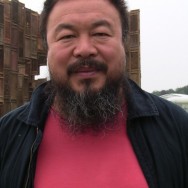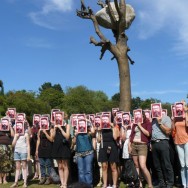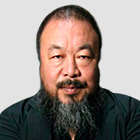Getting Over Ai Weiwei
A Critical Response to Ai Weiwei’s Comments on the Exhibition “Art of Change” at the Hayward Gallery (read Iona Whittaker’s review here).
The Hayward Gallery’s latest exhibition, “Art of Change: New Directions from China,” opened recently to almost universally positive reviews that in almost every case reflected a mixture of pleasure and fascination. While some reviewers expressed uncertainty with regard to the precise significance of individual works, most shared the view that the exhibition presents fresh insights into the relationship between contemporary art and society within China, and in particular contemporary Chinese art’s critical engagement with authority.
This combination of impressions is perhaps unsurprising. In spite of almost daily media coverage, China remains something of an unknown quantity. Consequently, most UK-based reviewers lack the detailed knowledge required to place contemporary Chinese art. At the same time, there is something compelling about an art whose meanings remain only partially grasped but that is self-evidently engaged in a complex relationship with the extraordinary changes now taking place within contemporary China.
One reviewer, however, was not impressed. In his comments published by the Guardian on 10 September the Chinese artist and activist Ai Weiwei launched a scathing attack on the organisers of “Art of Change,” accusing them of misrepresenting contemporary art in China. In Ai’s view, the show fails to address any of China’s most “pressing contemporary issues” and in particular the fact that there is within China currently “no room for freedom of expression.” Contemporary art in China is, Ai argues, “merely a product” that “avoids any meaningful engagement” and whose only purpose outside China is therefore “to charm viewers with its ambiguity”. It seems unlikely that Ai has actually seen the show or read its accompanying catalog since he is still subject to effective house arrest in Beijing.
In recent years Ai Weiwei has become a familiar media presence within the UK. Interminable online rants, scathing public attacks on officialdom, headline-grabbing exhibitions and artworks, a series of police beatings, life-threatening hospitalization, a BBC documentary by Alan Yentob, captivity without trial, a high-profile prosecution for “tax evasion,” a certificated whip-round among friends and associates to pay the bill and, more recently, a cinematic self-portrait of the artist as unreconstructed non-conformist have secured Ai’s place not only as a commentator of first choice on the subject of contemporary art in China but also as a spectacular personification of resistance to Chinese authoritarianism. No television, radio or newspaper coverage of contemporary Chinese art would be complete without at least a passing reference to Ai as China’s best-known and perhaps most significant living artist. He is the UK media’s Chinese cultural equivalent to Aung San Suu Kyi; a sanctified beacon of opposition now partially silenced by house arrest though still evidently raging against the injustices meted out to himself and to others at the hands of the Chinese authorities.
In spite of its liberalizing social and economic reforms of the last three decades, China remains a place of often breathtaking political brutality. Open challenges to the authority of China’s ruling communist party as well as anything that might be perceived to undermine the integrity of the Chinese nation-state are, as they were throughout the Maoist period, simply beyond the political pale. The consequences of transgression — extra-judicial harassment of self and family, detention, exile and even death — persist in being both real and pernicious. However, with the increasingly precipitous unfolding of post-socialist modernity within China since the late 1970s limits on freedom of action and expression have become ever-more mobile and ill-defined. As a result, panoptical self-surveillance and self-discipline as well as spectacular demonstrations of state power and growing material wealth are now the combined bulwarks of China’s prevailing socio-political order. Direct use of state violence is deemed necessary only in relation to extreme or recidivist dissidence. Ai continues to remind us of these thoroughly nasty and objectionable facts not only through his various acts of open resistance to authority but also the state of home confinement he now finds himself in. His constant baiting of authority and refusal to bow to intimidation has resulted in a Kafkaesque backlash the mere prospect of which would terrorize most of us into lasting and abject silence. For his defiance in the face power Ai deserves our continuing attention and respect.
There are, though, significant dangers in the upholding of Ai as our sole representative/mediator of artistic resistance to authority within China. While Ai’s bluntly confrontational and often bombastic stance can be readily digested within Western liberal-democratic contexts where romantic notions of heroic dissent in the face of overwhelming power still persist, it is by no means representative of the critical positioning of most other Chinese artists. Ai may have situated himself admirably behind enlightened westernized ideals of freedom and openness, but the sheer bluntness and reductive simplicity of his critical approach to authority have effectively foreclosed a more searching discussion of contemporary art within China as well as the complex, web of localized cultural, social, political and economic forces that surround its production and reception.
Within China there are, of course, a great number of contemporary artists who have brought together Chinese and non-Chinese cultural influences simply in pursuit of commercial success. There are also a very few who, like Ai, have adopted an openly hostile approach towards authority. But there are also many others who have sought to develop sophisticated hybrid visual languages capable of sustaining rather more subtle forms of critical reflection and expression. As part of China’s Daoist-Confucian tradition, there is a long-established understanding that art has the potential go beyond the merely formalistic to offer meaningful social commentary and spiritual enlightenment. In accordance with that tradition, artistic criticism of authority within China has tended towards the poetic and allegorical as well as the exercising of symbolic forms of withdrawal. This lack of open criticism of authority is not entirely a matter of pragmatism. It is also considered a marker of civilization. For the civilized Chinese artist who wishes to rise above the vulgarities of power, poetic and allegorical forms of criticism not only resist easy definition, they are also assumed to have the force of an unstoppable spontaneity commensurate with the way of nature; one metaphorized in the Daoist classic the Daodejing by observations of the destructive action of water on stone.
“Art of Change” is an important and ground-breaking showcase for the complex range of critical responses to power and social change within the PRC. While some of the works included in the exhibition encompasses aspects of traditional Chinese cultural thought and practice as a resistant departure from mainstream Chinese life and politics, others present recognizably (and understandably) encoded responses to the tragic absurdities of a society still subject to crushing bureaucracy, corruption and lack of accountability. Examples of the former include Liang Shaoji’s use of ready-mades as sculptural supports for the depositing of silk by live silk worms, which resonates strongly with, amongst other things, the artist’s interest in Daoist and Einsteinian relativity — a distinct foil to current Chinese Communist Party supported-notions of rational-scientific progress. Among the latter are videos and installation works by Sun Yuan and Peng Yu, Gu Dexin and Wang Jianwei that present often complex and highly oblique allegories of the combined effects and inherent contradictions of China’s entry into global modernity and the localized persistence of totalitarian power.
From a Westernised post-Enlightenment perspective all of this presents itself as unutterably weak, complicit and, perhaps, self orientalizing. However, China is not the West. There is little prospect of a shift any time soon towards the kinds of publicness and criticality now established in Western liberal democratic contexts. Nevertheless, for those with the patience to see there are localized forms of resistance that, while easily overlooked from a Western point of view, continue to act obliquely and perhaps tellingly over time on authority within China.
Ai Weiwei is right in drawing our repeated attention to the debilitating injustices of totalitarian power within China. He is also right to upbraid western viewers for their inability to see past what are for them the pleasurable ambiguities of contemporary Chinese art. Less convincing, however, is Ai’s wholly reductive view of the critical possibilities of contemporary art in China. By insisting on his own stridently oppositional approach towards power as the only legitimate game in town, and because we are already highly familiar with that approach, it is he and not the Hayward who has misrepresented the contemporary Chinese artworld. One might add that Ai is also romanticizing the conditions of criticality in the West.
2012.11.19 Mon, by Paul Gladston Check out Randian website here




 Back to Index
Back to Index